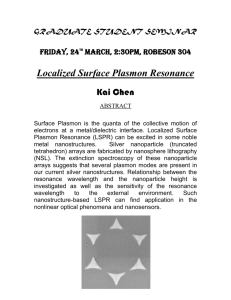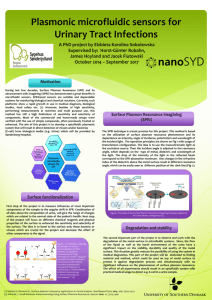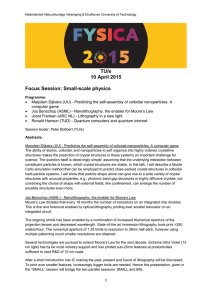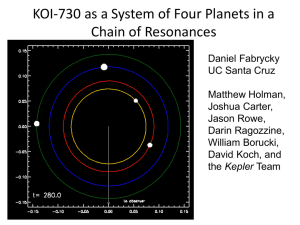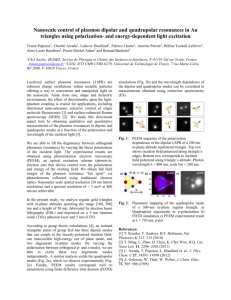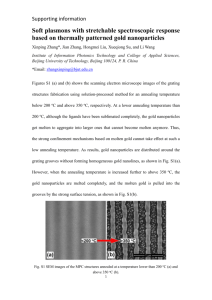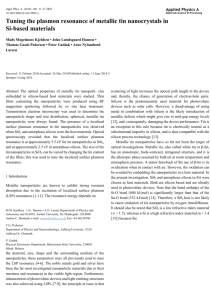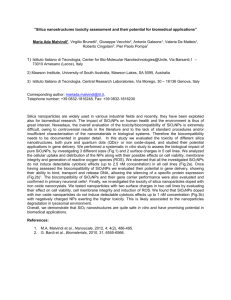Surface Plasmon resonance in near field coupled Au dot array
advertisement
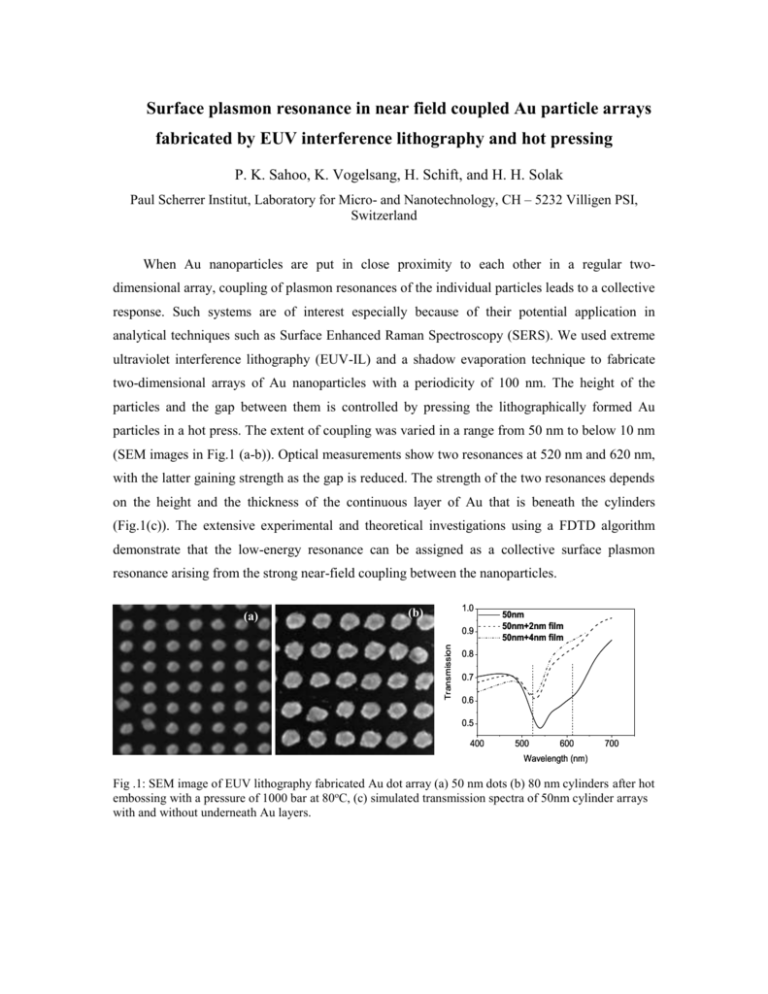
Surface plasmon resonance in near field coupled Au particle arrays fabricated by EUV interference lithography and hot pressing P. K. Sahoo, K. Vogelsang, H. Schift, and H. H. Solak Paul Scherrer Institut, Laboratory for Micro- and Nanotechnology, CH – 5232 Villigen PSI, Switzerland When Au nanoparticles are put in close proximity to each other in a regular twodimensional array, coupling of plasmon resonances of the individual particles leads to a collective response. Such systems are of interest especially because of their potential application in analytical techniques such as Surface Enhanced Raman Spectroscopy (SERS). We used extreme ultraviolet interference lithography (EUV-IL) and a shadow evaporation technique to fabricate two-dimensional arrays of Au nanoparticles with a periodicity of 100 nm. The height of the particles and the gap between them is controlled by pressing the lithographically formed Au particles in a hot press. The extent of coupling was varied in a range from 50 nm to below 10 nm (SEM images in Fig.1 (a-b)). Optical measurements show two resonances at 520 nm and 620 nm, with the latter gaining strength as the gap is reduced. The strength of the two resonances depends on the height and the thickness of the continuous layer of Au that is beneath the cylinders (Fig.1(c)). The extensive experimental and theoretical investigations using a FDTD algorithm demonstrate that the low-energy resonance can be assigned as a collective surface plasmon resonance arising from the strong near-field coupling between the nanoparticles. 1.0 (b) (a) Transmission 0.9 50nm 50nm+2nm film 50nm+4nm film 0.8 0.7 0.6 0.5 400 500 600 700 Wavelength (nm) Fig .1: SEM image of EUV lithography fabricated Au dot array (a) 50 nm dots (b) 80 nm cylinders after hot embossing with a pressure of 1000 bar at 80oC, (c) simulated transmission spectra of 50nm cylinder arrays with and without underneath Au layers. (a) (b)
